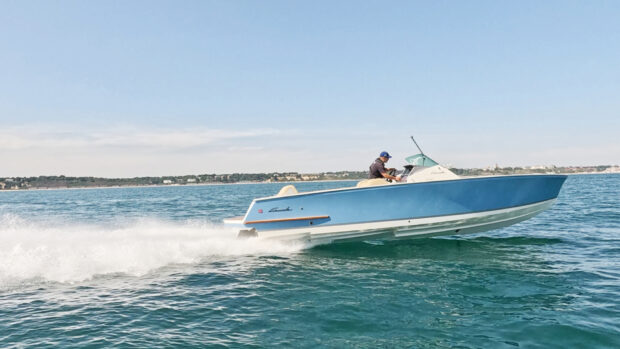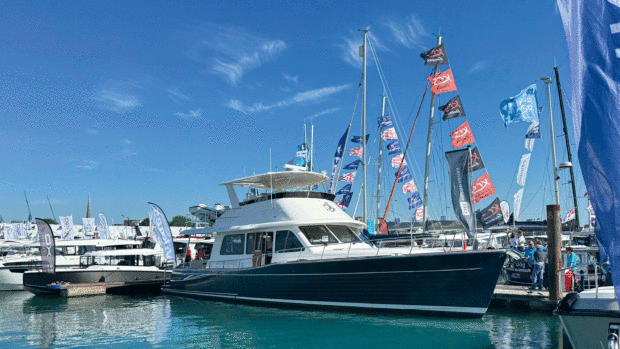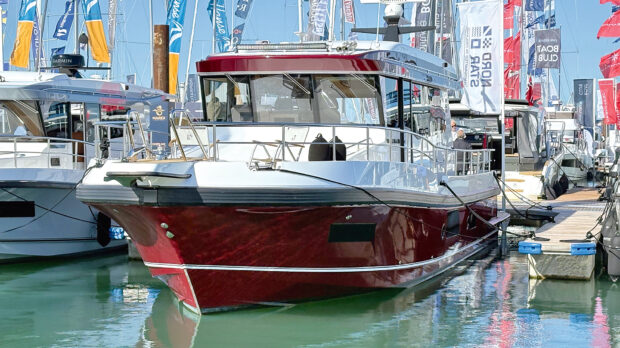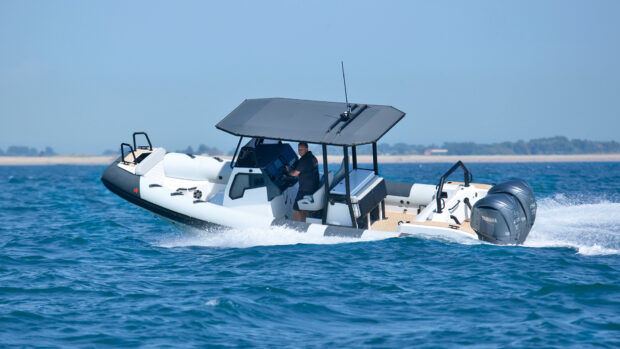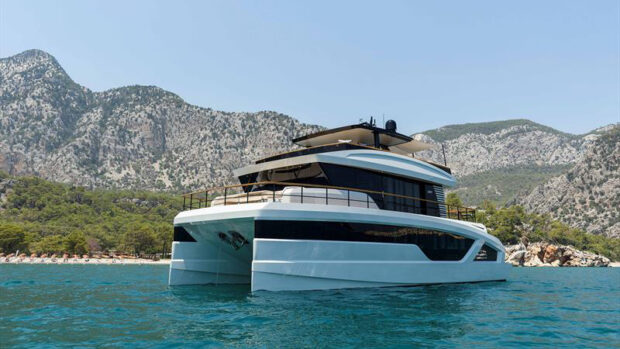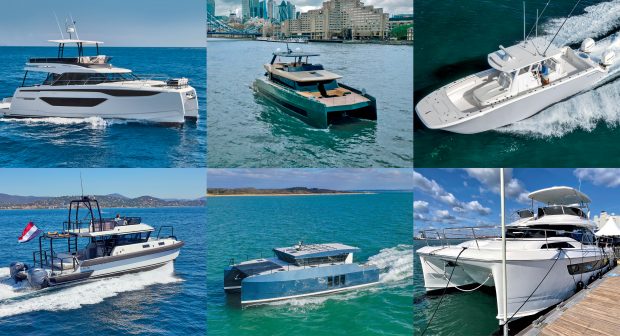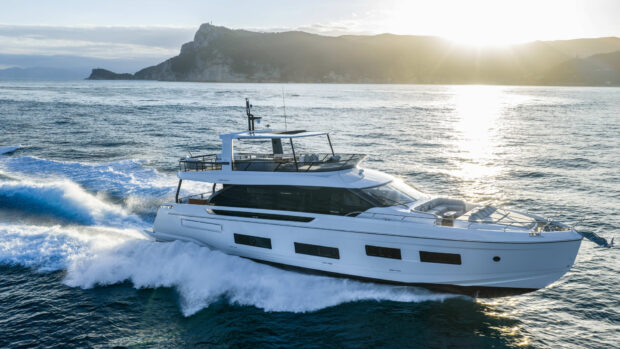Want to know what's the best cooler for boaters? We sent our expert tester, Phill Sampson out on a sunny day to test all the options
Nobody knows better than a boater that you need to keep your cool at sea. And while that’s great advice, how do you keep your food and drinks cool too? Well, the obvious answer is to get the best cooler for boaters that you can afford.
But the decision is not as simple as that. The best cooler for boaters, depends on what sort of power and storage space you have among other considerations. If you’ve got onboard power then an electric cooler may well be the answer.
But if you haven’t, a passive cooler – that’s one packed with ice – could be what’s needed. Choosing exactly which kind of cooler is right for your boat is a decision worthy of consideration. And to help you make your mind up, I’ve tested a range of leading boat cooler models ranging from go-anywhere passive coolers to high-spec electrically-operated units.
The best cooler for boaters 2025
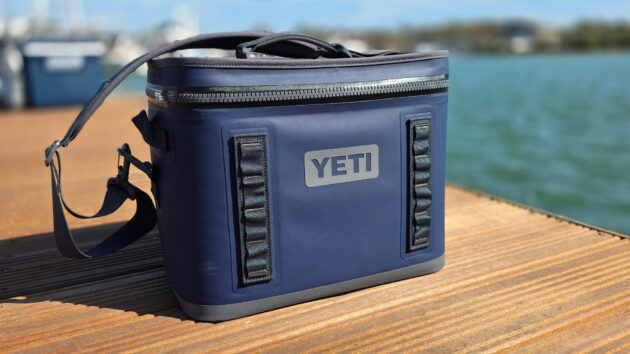
Yeti Hopper Flip – Best cooler on test
Specifications: Volume: 23.4l | Dimensions: 413w x 273d x 330h | Weight 2.3kg
Reasons to Buy: sturdy but compliant to fit into places other solid cool boxes can’t, really strong zip, useful handles and carrying strap
Reasons to Avoid: have you seen the price tag? we found that the liner stained easily with a spilled sauce
Available in three size formats designated ‘8’, ‘12’ and ‘18’, the Yeti Hopper Flip cool bag is perhaps best described as Small/Medium/Large but perfectly Formed, depending upon which variant you opt for.
As the largest in the range, this test model – the Yeti Hopper Flip 18 – is capable of carrying 20 cans of beer based on a 2:1 ice-to-can ratio by volume.
It’s no overstatement to say the quality of the Yeti Hopper Flip hits you before you even touch it – it’s so obviously a premium product that this is a grab bag that grabs you. The box’s swish dryhide shell is complemented by its colour-contrasted lid and carry strap.
One feature worthy of its own paragraph is the zip. No normal zipper this, but a super-tough Hydrolok zipper which Yeti claim is 100% leakproof. Our eye was first drawn to the zip by the label attached to it. It says ‘Pull Hard’. And, boy, do they mean hard! I found it did ease up after a while, and to keep it functioning smoothly Yeti have considerately included a tube of lube as part of the package.
All in all, this is a product that’s going to turn heads and perform well wherever you take it – a great passive cool bag choice.
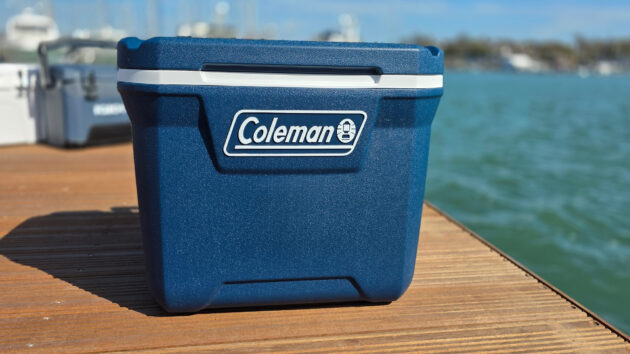
Coleman Xtreme 47l – Best cooler for portability
Specifications: Volume: 47l | Dimensions: 550w x 380d x 500h | Weight 6.1kg
Reasons to Buy: strong enough to sit on, telescoping handle, it has good wheels! decent molded in handles, great value for money
Reasons to Avoid: the lid doesn’t lock closed which some may find opens a little easily in a bouncing rib.
With its extendable telescopic handle and twin heavy duty wheels, the Coleman Xtreme is effectively a king-size rollalong. Designed to take the grunt out of shifting heavy loads considerable distances, including over uneven ground, this ruggedly-constructed unit would make an ideal cooler for beach parties and the like.
While its petrel blue outer shell gives the Coleman a somewhat retro appearance (in my humble opinion) it is nonetheless up there in terms of the technology it employs. Both the inner and outer shells are comprised of the same HDPE plastic (High Density Poly Ethylene) as used in a raft of tried and tested household products such as food containers, bleach bottles and piping.
Coleman have thoughtfully added three features to the Xtreme cooler which add to its appeal, especially when taken off-grid: Firstly, there’s two recessed handles which come in handy when crossing a sandy beach.
Then there’s the ‘Have-A-Seat’ lid – strong enough to support weights of up to 113 kilogrammes.
Lastly – and again really useful if you’re on uneven ground – are the four cup holders built into the lid.
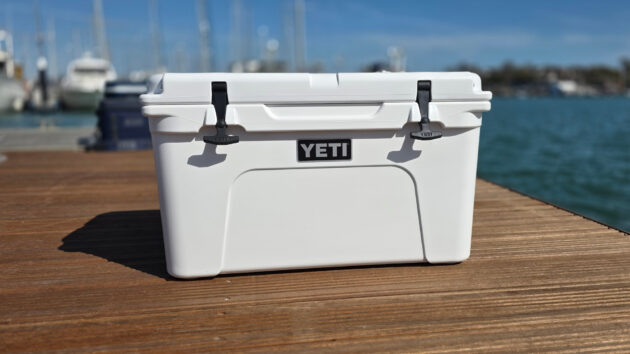
Yeti Tundra 45
Specifications: Volume: 32.9l | Dimensions: 650w x 400d x 400h | Weight 11kg
Reasons to Buy: incredibly strong, bear proof, nice organising basket interior
Reasons to Avoid: this is really heavy for the size, rope handles can be a bit of a faff
It would be cruel to describe the Yeti Tundra 45 as the ugly sister of the Yeti Hopper Flip, but there’s no escaping the fact that this is utilitarian product designed to do its job rather than one that courts admiring glances from the chattering classes.
Consequently, the Tundra 45 would be just as at home keeping the bait cool on a fishing boat off a windswept coastline as it would chilling the Prosecco in a balmy Mediterranean bay. Yeti have done what they can to mitigate this focus on functionality by offering the Tundra in an even greater range of bonkers colours than its Hopper Flip stablemate.
In my testing the Fatwall performed as well as any other box I tested, ending up almost 2°C below ambient a full 24-hours after our ice packs had been removed.
Noteworthy features on the Tundra include its ‘T-Rex’ lid latches. Why ‘T-Rex’ I have no idea, but these are heavy duty rubber straps which pull the lid firmly down onto the unit’s freezer-quality Coldlock gasket to ensure a good seal is maintained at all times.
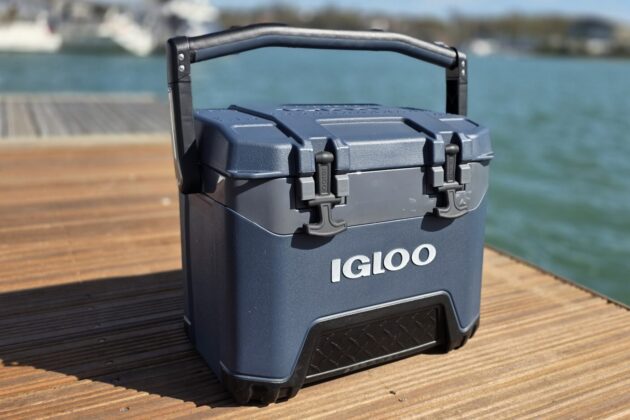
Igloo BMX 25
Specifications: Volume: 23l | Dimensions: 513w x 304d x 401h | Noise: N/A | Energy rating: N/A
Reasons to Buy: really sturdy little cooler, ideal size for carrying food back from the take out, strong enough to sit on, really sturdy rubber catches, great value for money
Reasons to Avoid: The large handle can get in the way of the lid so you have to fold it back out of the way in order to open the cooler
Think Texas and you think big – and Texan brand Igloo certainly embraces the mantra for everything it does is larger than life. Today part of the Dometic group, Igloo began trading in 1947 and made its name with the ‘Playmate’ cooler, aka ‘America’s Lunchbox’ (stop sniggering at the back) and since then has gone on to become one of the world’s best known cooler brands.
While the Igloo range goes right up to a whopping 125-quart cooler, I opted something far more discrete; the 23-litres BMX 25.
When I say discrete I only mean in terms of size, for everything else about the BMX 25 shouts just as loud as all Igloo’s other goodies. Portable and compact and available in a variety of colours, the BMX 25 is a tough, durable go-anywhere type of cool box.
With steel kick plates, hefty hinges and chunky T-latches adorning its somewhat angular blow-moulded shell, it’s billed as the ideal companion for fishing and just about any other outdoor pursuit you can think of – the only thing you can’t do is ride it; it’s not that sort of BMX.
Best cooler for boaters – Powered

Dometic CFF18 – Best Powered cooler
Specifications: Volume: 19l | Dimensions: 507w x 300d x 422h | Noise: 43dB | Energy rating: B
Reasons to Buy: fits into smaller boats and small spaces, proper compressor chiller gives really good cooling effect
Reasons to Avoid: limited capacity suits short day trips and smaller storage needs
The Dometic CFF 18 is compressor cooler which means it employs the same cycle of pressurising, condensing, expansion and evaporation as a domestic refrigerator. Incidentally, a key difference between compressors and thermo-electric coolers is that compressor units are capable of holding a steady temperature, whereas thermo-electric coolers cool relative to the ambient temperature.
With a capacity of 19-litres, the CFF18 is the smallest of the boat coolers I tested. But that doesn’t make it a tiddler in the grander scheme of things; Dometic’s smallest powered unit holds just 7-litres, enough for half a dozen bottles of water – remember, electric coolers don’t have to be packed with space-hogging ice. I managed to cram four bottles of wine, six cans of beer, a bottle of water and couple of bars of chocolate into the CFF18 – sounds like a party to me!
Using the cooler is a piece of cake – just plug it in and there’s then no more than an on/off switch and temperature setting “Set”, “+” and “-“ buttons to worry about. And super simple probably sums up the Dometic CFF18 – it’s a no fuss, no frills portable cooler; very handy to have on board a boat and compact enough to fit in the smallest dinghy whenever you venture ashore.
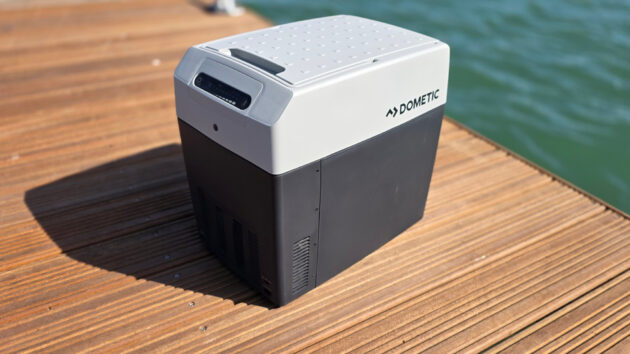
Dometic TCX21 Mobile
Specifications: Volume: 21l | Dimensions: 450w x 303d x 420h | Noise: 41dB | Energy rating: E
Reasons to Buy: fits into smaller boats and small spaces, frugal on power compared to some others, really neat carry handle
Reasons to Avoid: limited capacity suits short day trips and smaller storage needs
With the ability to either chill to 27°C below ambient temperature or heat to 65°C, Dometic’s TCX21 Mobile cooler box stands alone as a dual-function unit among the products I tested – keep the beer cool or the sausages warm, neither is a problem for the TCX21.
The key to the TCX21’s secret is that it’s a thermo-electric unit, which works by utilising an electronic phenomena known as the Peltier Effect. Without getting in too deep the Peltier Effect is what happens when an electric current is passed through the circuitry of a thermocouple: Heat is generated on one side and absorbed on the other, thus enabling hot/cold functionality.
The two niggles I had with the Dometic TCX21 cooler box is that it’s fan is somewhat noisy in operation and its carrying handle has to be stowed before you can open the lid – that caught me out once or twice, although in fairness you could perhaps say I wasn’t paying attention.
Nonetheless, for its size, price and the ability to keep half a case of wine nicely chilled makes the TCX21 an attractive proposition where space is limited.
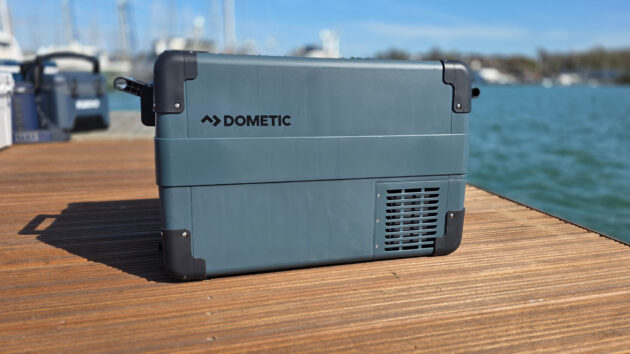
Dometic CFX2 37
Specifications: Volume: 37l | Dimensions: 678w x 401d x 428h | Noise: 42dB | Energy rating: B
Reasons to Buy: can freeze or cool so you have options! really sturdy flip out carry handles. secure lid latch with alert if accidentally left ajar.
Reasons to Avoid: larger capacity cooler might require a larger battery capacity to keep it running. The long lid mean access under counter tops can be tricky for stowage
The CFX family of compressor cooler sit firmly at the premium end of the market. Robustly constructed with a lightweight shell, a tough removable lid with a click-shut latch and stainless steel hinges, plus reinforced corners, four sizes of CFX2 coolers are available: 28l, 37l, 45l and 57l.
For my test I opted for the mid-size 37l unit, which according to Dometic can carry enough provisions to last 2-4 adults 1-3 days. Judging by the internal space available, that translates to around a case of wine plus half a dozen beers.
This being the 21st century, the CFX2 naturally has its own app, which allows remote temperature setting and monitoring, and the unit has built-in WiFi and Bluetooth connectivity. There’s also a USB charging point built into the display, not exactly necessary but a nice touch nonetheless.
In operation, the CFX2 is quiet and efficient. It achieved target temperature of -1°C comfortably within an hour. With a temperature range of +20°C to -22°C, the unit can act as a fridge or a freezer, although Dometic say it is not suitable for fast-freezing food.
How I tested the best boat coolers
While any passive cooler will do a good job provided it’s packed with ice, and any powered model will keep its cool as long as it’s plugged in, just how efficient is the insulation of the models I tested? To find out I started by pre-chilling each unit. For the passive coolers that meant placing two 1-litre ice packs inside for an hour.
The three Dometic electrically-powered models I test here were also given an hour to chill, but under their own steam rather than by way of ice packs. I set the target temperature to -1°C on Dometic’s CFX2 compressor and CFF18 thermo-electric units. Both achieved their target comfortably within the hour, with the CFX2 bang on at -1°C and the CFF18 registering a low of -1.5°C. The smallest of the three units, the TCX21, doesn’t have a digital temperature display but is claimed to cool to 1°C. After running for an hour its interior temperature had dropped to 1.5°C, so that was its starting point for our test.
Once each unit had cooled for a hour I placed 33cl of chilled water (coincidentally the size of a bottle of beer!) in a sealed container inside. I then monitored the heat loss – both inside the cooler and of the water – over a period of 24-hours, with a 12-hour mid-point temperature check. The ambient temperature of our test room was also monitored, and a second sealed 33cl container of water was placed outside the cooler to act as a control for our experiment.
Our tests found that in every case the air temperature inside the coolers rose rapidly once their power sources (ie: ice or electricity) had been removed. Typically, around 10°C was gained in the first two hours. Thereafter, the rate of climb decreased as ambient was approached, although in 24-hours none of our coolers actually reached room temperature, generally falling short by around 2.0°C. The effect of all this is that in every case the water inside the cooler remained more chilled than the control water for the duration of our trials – and for the crucial first few hours was far cooler.
 If you enjoyed this….
If you enjoyed this….
Motor Boat & Yachting is the world’s leading magazine for Motoryacht enthusiasts. Every month we have inspirational adventures and practical features to help you realise your sailing dreams, as well as tests and news of all the latest motorboats.
Plus you’ll get our quarterly Custom Yachting supplement where we share the last on offer in the superyacht world and at the luxury end of the market.
Build your knowledge with a subscription delivered to your door. See our latest offers and save at least 30% off the cover price.
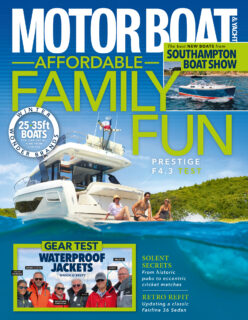



 If you enjoyed this….
If you enjoyed this….